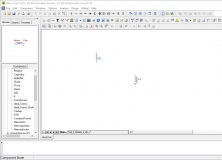


The development and delivery of a range of vaccines against the virus is under way, with several already approved for use and others in late-stage clinical trials ( 3). In this time, there has been an unprecedented global effort to identify new diagnostic tests, treatments, and, more recently, vaccines against the virus and the associated disease, COVID-19.

Severe acute respiratory syndrome coronavirus 2 (SARS-CoV-2) has swept the globe at an alarming rate, with a reported 90 million cases and 1.9 million deaths by the 1-year anniversary of the first death from this pandemic ( 1) and increasing to 119 million cumulative cases and >2.6 million deaths by the middle of March 2021 ( 2).

The candidate reference materials assessed did not generate uniform results across several methods, and further steps are needed to enable the harmonization process. The Abbott IgG II anti-SARS-CoV-2 measurement appears to be the first linear method potentially capable of monitoring the immune response to natural infection, including from new emerging variants. The candidate reference materials showed poor correlation across methods, with mixed responses noted in methods that use the spike protein versus the nucleocapsid proteins as their binding antigen. The sensitivity (based on ≥14-day post-positive reverse transcription-PCR samples) and specificity were 98.3% (90.6% to 100.0%) and 99.5% (97.1% to 100%), respectively. The Abbott IgG II method performed well across a wide range of parameters with excellent imprecision (<3.5%) and was linear throughout the positive range (tested to 38,365 AU/ml). Two different candidate primary reference materials and verification panels were assessed with a goal to move toward harmonization. A comprehensive evaluation of the new Abbott IgG II anti-SARS-CoV-2 IgG method was undertaken using CLSI-based protocols. These should be harmonized to a primary reference material, allowing for the comparison of trial data and improved clinical decision making. To enable meaningful clinical decisions to be made, robustly evaluated, quantitative serology methods are needed. Many were not evaluated rigorously, and there is a significant lack of concordance in results across methods. In the initial stages of the severe acute respiratory syndrome coronavirus 2 (SARS-CoV-2) COVID-19 pandemic, a plethora of new serology tests were developed and introduced to the global market.


 0 kommentar(er)
0 kommentar(er)
